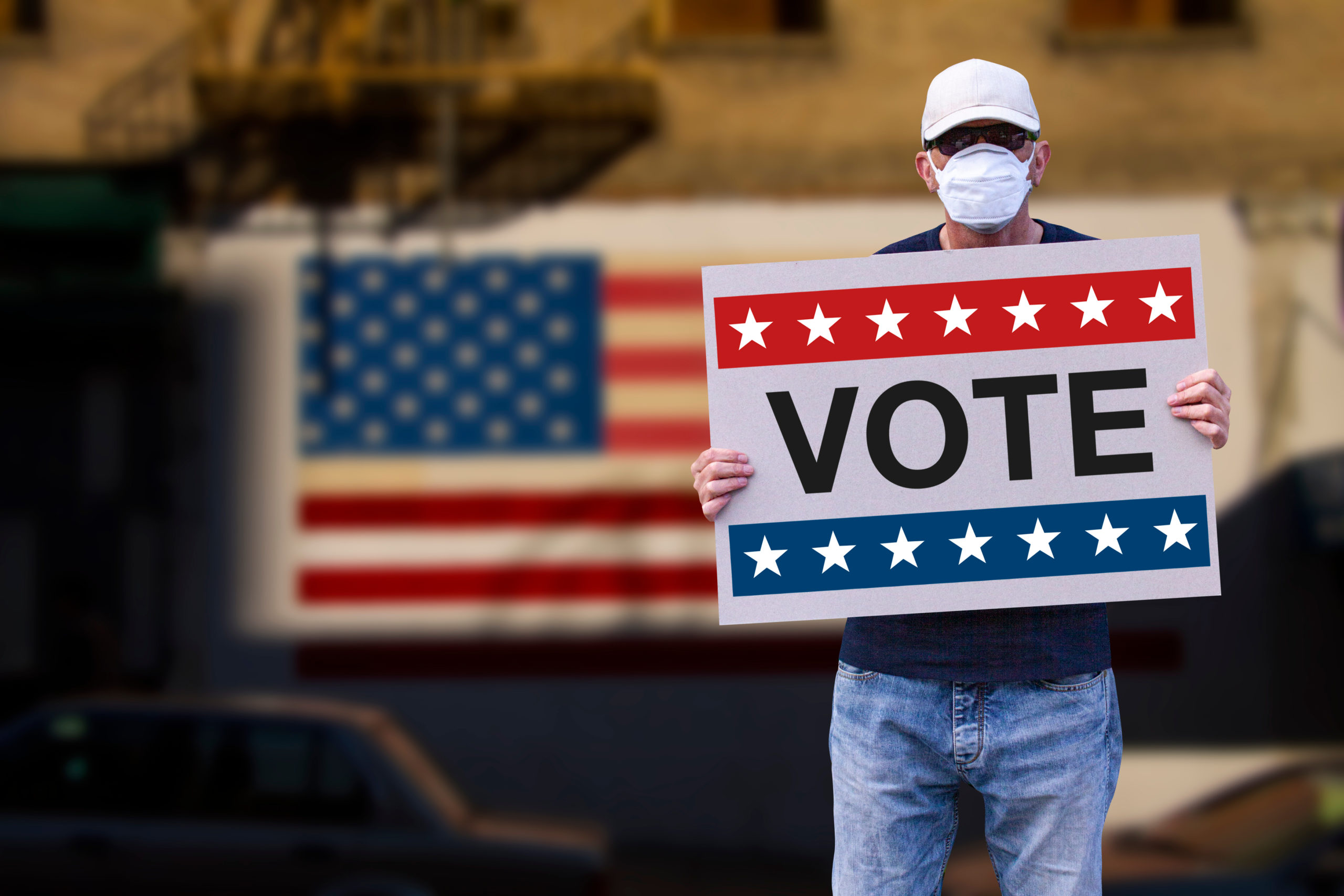Becoming a Democracy: Chapter 7—"Honor the People’s Choice for President"

An excerpt from Becoming a Democracy: How We Can Fix The Electoral College, Gerrymandering, and Our Elections
Implement the National Popular Vote Interstate Compact to respect the will of the people in choosing their country’s leader.
Ron’s story
Ron Branston, 63, has lived in Mobile, Alabama, his entire life. He votes in every presidential election and follows the candidates avidly. But sometimes he feels discouraged.
“Why do I even bother?” he asks. “I keep voting, but all my state’s votes always go to someone else.”
As a Democrat in a reliably red state, under a state-winner-take-all Electoral College system, his vote has never helped a candidate win a single electoral vote.
 “And they know it, too. They know it doesn’t matter what I do. That’s why they never stop here.”
“And they know it, too. They know it doesn’t matter what I do. That’s why they never stop here.”
Ron has been waiting for a candidate to make a campaign stop nearby so he could go hear them talk in person. He’s been waiting in vain. Alabama is a “safe” state for the GOP, which makes it a “spectator” state that candidates from both parties can ignore because its nine electoral votes are all sewn up, no matter what voters like Ron do. Ron and his fellow Alabamans, whether left or right, are relegated to the status of spectator, just watching the presidential race play out in the handful of battleground states.
The state-winner-take-all Electoral College system makes many Americans’ votes pointless
In two of the past five elections, and five times in the history of the United States, the candidate who won the most votes nationwide lost the presidential election. The fault, lies with the archaic Electoral College, an eighteenth-century compromise that still controls the elections of the twenty-first century’s most powerful country.
Although Americans cast a vote for president every four years, their votes do not count directly for their choice for president, but instead are strained through a Constitution-mandated filter that inflates the importance of voters in some states and relegates others to irrelevance. The filter is this: each state gets electoral votes equal to the number of its congressional delegation, which equals the number of representatives it sends to the House of Representatives plus its two senators. At present, most states award their Electoral College votes on a “winner-take-all” basis: the U.S. presidential candidate who gets the most votes in the state gets 100 percent of that state’s electoral votes, no matter how many of its voters preferred a different candidate. This system creates a host of ills for the country, not least of which is overriding the will of the people.
The Electoral College
- gives almost all the political power to voters in battleground states. For example, because New York (with 29 electoral votes) is a reliably blue state while Florida (also 29 electoral votes) is a toss-up, candidates campaign fiercely in Florida and ignore New York.
- gives more numerical power to voters in smaller states. Wyoming, for example, with fewer than a million voters, and California, with nearly 40 million, both have just two senators, and each Senate seat gives each state one additional Electoral College vote.
- gives more effective power to white voters than Black voters. Black voters are concentrated in Southern states, which have consistently given all their Electoral College votes to the candidate that most Black voters voted against.
Problem 1: Overriding the popular vote
Counterintuitively, the candidate who gets the most votes does not necessarily win the US presidency. In 2000, the state-winner-take-all system chose George W. Bush, despite Al Gore’s half-million vote lead in the popular vote. While this stung for Democrats, the mismatch between people’s votes and electors’ votes may not always favor the Republican. There have been six other near-miss elections since World War II, including in 2004, when a shift of just 59,393 votes in Ohio could have awarded the presidency to John Kerry, even though George W. Bush would have won the popular vote by nearly 3 million votes.
The chart below shows the percentage of the popular vote that Democratic and Republican candidates for president have won in the past six elections. When the election is clear-cut— that is, greater than a few percentage points’ difference between the top two candidates— the Electoral College agrees with the people.
But when the election is close—within two percentage points —the Electoral College anoints the less popular candidate as president one time in seven. Candidates can become president of the United States without support from a majority of voters (more than 50 percent), and they don’t even need to win a plurality (more votes than any other candidate). A candidate could win just 22 percent of the popular vote and win the presidency, and a candidate has won the presidency with just 31 percent of the vote. That kind of result might make Americans wonder just exactly what “one person, one vote” really means.
Want to read more? Sign up today and download the rest of this chapter! And to make sure our newsletter always reaches your inbox, please add editor@sightline.org to your contact list or address book to keep us out of your spam folder.

